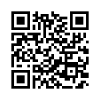KELUARGA DAN NEGARA: RUANG NEGOSIASI DIRI DALAM NOVEL QUI A TUÉ MON PÈRE KARYA ÉDOUARD LOUIS
Burhanudin Burhanudin, Universitas Negeri Yogyakarta, Indonesia
Abstract
Abstract (Title: Family and State: Space of Self-Negotiation in “Qui A Tué Mon Père” Novel’s by Édouard Louis). Literary work reflects a culture outside its world. A family cannot be separated from society and country in which it is belonged to. Individuals in a family cannot be disconnected from their genetics. This qualitative descriptive study using Bourdieu’s theoretical reference aims to describe the habitus, symbolic violence, and the arena of power in the novel “Qui a tué mon père” or “Who Killed My Father” by Édouard Louis. The results showed that the habitus manifested through the main character “Je” or “I” was obtained through an individual historical process as someone who was born in a poor and a working family that is structurally dominated by society and state. In conclusion, the main character who experienced symbolic violence not only from his family (father and mother) but also from his social environment (neighbor, school, and government) try to negotiate his identity through this novel.
Keywords: habitus, symbolic violence, arena of power, dialectical, structural-constructivistFull Text:
PDFReferences
Bourdieu, P & Passeron, J. (1970). La Reproduction : Elements Pour une Théorie du Systéme d’Ensignement. Paris : Minuit.
Bourdieu, P. (1980). Le Sens Pratique. Paris: Minuit.
Bourdieu, P. (1989). La noblesse d‟état: grands école et ésprit du corps. Paris: Minuit.
Bourdieu, P. (2011). Choses Dites. (Uraian & Pemikiran. Terj. Ninik Rochani Sjams). Yogyakarta : Kreasi Wacana. Original work published 1987.
Bourdieu, P. (2010). Arena Produksi Kultural: Sebuah Kajian Sosiologi Budaya. (Terj. Yudi Santosa). Yogyakarta: Kreasi Wacana. Original work published 1993.
Faruk. (2015). Pengantar Sosiologi Sastra. Yogyakarta: Pustaka Pelajar.
Fouquet, A. (2004). Le travail est rendu responsable d’un problem de santé sur cinq. Paris: Premieres syntheses.
Grenfell, M. (2008). Pierre Bourdieu: Key Concepts. Stocksfield: ACUMEN.
Jenkins, R. (2004). Membaca Pemikiran Pierre Bourdieu. Yogyakarta. Wacana.
Journal Officiel De La Republique Française. (2015). Rapport Annuel sur l’État de la France en 2015. Paris.
Labonte, M. (2019). Qui A Tué Mon Père, Une Lasagna Littéraire. Retrieved 25/06/20 https://Karoo.me/livres/qui-a-tue-mon-pere-lasagne-litteraire.
Le Monde. (2006). 152 médicaments ne seront plus remboursés par la “sécu’ a partir de mercredi. https://www.lemonde.fr/societe/article/2006/02/28/152-medicaments-ne-seront-plus-rembourses-par-la-secu_745898_3224.html (Diakses pada tanggal 1 juli 2020).
Louis, É. (2018). Qui a Tué Mon Pere. Paris. Seuil.
Mediapart. (2012). Assistanat: Le Discours Indigne de Nicholas Sarkozy. https://blogs.mediapart.fr/yves-faucoup/blog/270412/assistanat-le-discours-indigne-de-nicolas-sarkozy (Diakses pada tanggal 5 juli 2020).
Minima sociaux et prestations socials. (2019). Le Revenue De Soladrité Active (RSA) . Dress.
Mournier, P. (2001). Pierre Bourdieu : une Introduction. Paris. La Découvert.
Rahayu, L. M. (2020). Identitas Keindonesiaan dalam Drama Nyanyi Sunyi Revolusi Karya Amir Hamzah. Diksi, Vol 28, No 2, 114-124. https://doi.org/10.21831/diksi.v28i2.
Ritzer, G. (2014). Sociological theory. (Saut Pasaribu, Rh. Widada, Eka Adi Nugraha, Trans). Yogyakarta : Pustaka Pelajar. (Original work published 2012).
Teeuw, A. (2015). Sastra dan Ilmu Sastra. Jakarta. Pustaka Jaya.
Théâtre Lausane. (2020). Stanislas Nordey/Edouard Louis, Qui a tué mon père d'édouard louis. https://vidy.ch/qui-a-tue-mon-pere.
Solidaires industrie (2011). Le movement ouvrier et le syndicalisme (resume historique de 11789 a nos jours). Paris.
UnicefFrance. (2012). En France: Le Harcelement Scolaire. Fiche Thématique.
Zuchdi, D. (1993). Panduan Penelitian Analisis Konten. Yogyakarta: Lembaga Penelitian IKIP Yogyakarta.
DOI: https://doi.org/10.21831/diksi.v29i1.34020
Refbacks
- There are currently no refbacks.
Copyright (c) 2021 Diksi
Jurnal Diksi is published by Faculty of Languages, Arts, and Culture, Universitas Negeri Yogyakarta. It is licensed under a Creative Commons Attribution-ShareAlike 4.0 International License. Based on a work at http://journal.uny.ac.id/index.php/diksi
Our Journal has been Indexed by:
Diksi Journal is published by the Faculty of Languages, Arts, and Culture Universitas Negeri Yogyakarta in collaboration with Himpunan Sarjana Kesusasteraan Indonesia (HISKI)
Supervised by:

2.png)














